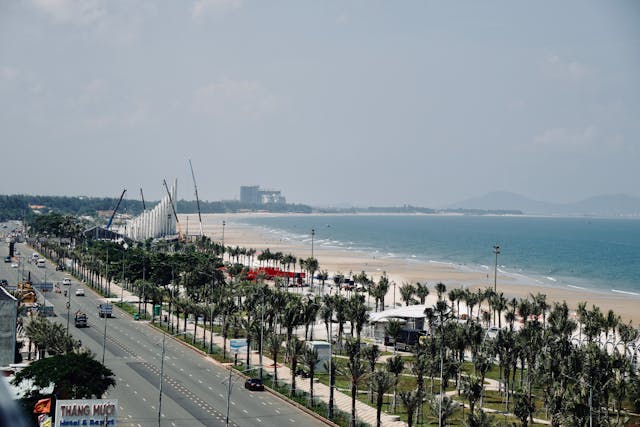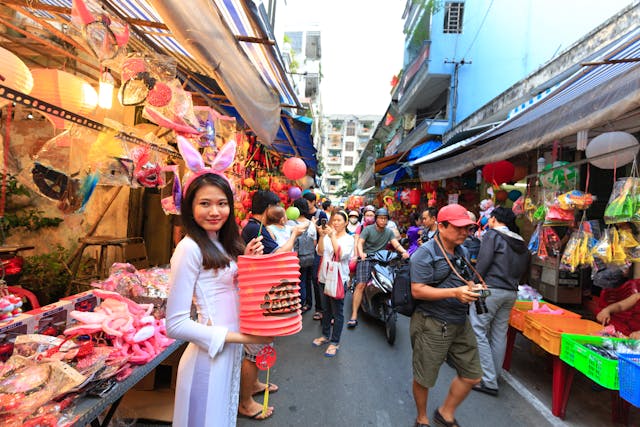Vietnam has become one of Southeast Asia’s most popular destinations for budget travelers, and it’s not hard to see why. With stunning landscapes, delicious street food, vibrant culture, and incredibly affordable prices, Vietnam offers an unforgettable experience without breaking the bank. If you’re a backpacker, a student, or a digital nomad looking to stretch your travel funds, then Vietnam makes it easy to explore on a budget.
In this guide, we’ll break down everything you need to know about budget travel in Vietnam—from transportation and accommodation to food, activities, and money-saving tips.
Why Vietnam Is Perfect for Budget Travelers
Vietnam consistently ranks as one of the cheapest countries to travel in Asia. From the bustling streets of Hanoi to the beaches of Da Nang and the rice terraces of Sapa, you’ll find affordable options for food, transport, and lodging at every step of the journey. Many travelers manage to spend as little as $25–$35 per day while still enjoying a comfortable and adventurous trip.
According to Budget Your Trip, the average daily cost for a backpacker in Vietnam is far lower than in neighboring countries like Thailand or Cambodia. That makes it especially appealing for those traveling long-term.
Getting Around Vietnam on a Budget
Transportation is one of the most important parts of budget travel, and Vietnam offers a variety of low-cost options.
1. Buses
Buses are the cheapest way to travel between cities. Companies like Sinh Tourist and Futa Bus offer “open tour” tickets that allow you to hop on and off along popular routes. A bus from Hanoi to Hue can cost as little as $10–$15.
2. Trains
Vietnam’s scenic Reunification Express railway connects Hanoi and Ho Chi Minh City. While trains are slightly more expensive than buses, they are still affordable. A soft-seat ticket for an overnight journey costs around $25–$35. For budget-conscious travelers, the hard-seat option is even cheaper. You can learn more about routes and schedules from Vietnam Railway.
3. Motorbikes
For the adventurous, renting or buying a motorbike is one of the most iconic ways to explore Vietnam. Rentals cost around $6–$10 per day, while purchasing a used bike can be as low as $250–$350. Popular routes include the Hai Van Pass between Da Nang and Hue, which has become world-famous thanks to its coastal views.
4. Domestic Flights
Low-cost airlines like VietJet Air and Bamboo Airways often run promotions where domestic flights cost less than $30. Flying can save time if you’re on a tight schedule, though buses and trains are better for ultra-budget travel.

Budget Accommodation in Vietnam
Vietnam offers a wide range of affordable lodging options.
-
Hostels: Dorm beds cost as little as $4–$7 per night in most cities. Many hostels include free breakfast and social events.
-
Guesthouses and Budget Hotels: Double rooms with air conditioning can cost $10–$20 per night.
-
Homestays: Staying with local families in areas like Sapa or the Mekong Delta is both affordable and culturally enriching. Expect to pay around $15–$25 per night with meals included.
For booking affordable stays, websites like Hostelworld and Booking.com are great places to find budget-friendly deals.
Eating on a Budget in Vietnam
One of the best parts of traveling in Vietnam is the food—and luckily, it’s also one of the cheapest.
-
Street Food: Iconic dishes like pho, banh mi, and bun cha typically cost $1–$2.
-
Local Markets: Fresh fruit smoothies and snacks can be found for less than $1.
-
Budget Restaurants: Even in sit-down restaurants, meals often cost no more than $3–$5.
Street food tours in major cities like Hanoi and Ho Chi Minh City are affordable and give you a deeper look at Vietnamese cuisine. If you’re concerned about safety, don’t worry—Vietnam’s street food is generally safe as long as you eat where locals are eating.
Affordable Activities and Experiences
You don’t need to spend a fortune to enjoy Vietnam’s top attractions.
-
Hiking in Sapa: Guided treks through rice terraces cost around $15–$20 per day.
-
Exploring Hoi An: Renting a bicycle costs less than $2 per day.
-
Beaches in Da Nang and Nha Trang: Completely free unless you rent a sun chair.
-
Museums and Temples: Entry fees are usually under $3.
-
Halong Bay Cruises: While some luxury cruises cost hundreds, budget day trips start around $40–$50.
For a deeper dive into affordable things to do, check out this Lonely Planet guide to Vietnam.
Money-Saving Tips for Vietnam
To stretch your budget even further, here are some tried-and-true tips:
-
Travel in the Off-Season – Prices for flights, hotels, and tours drop during the rainy season (May to September).
-
Use Local SIM Cards – Get a prepaid SIM card from Viettel or Mobifone for cheap data instead of relying on international roaming.
-
Haggle at Markets – Bargaining is expected at local markets. A friendly smile and some negotiation can save you money.
-
Drink Like the Locals – Skip imported alcohol and enjoy bia hoi, Vietnam’s famously cheap draft beer, for as little as $0.25 per glass.
-
Stick to Public Transport – Motorbike taxis (GrabBike) and local buses are far cheaper than regular taxis.
For practical budgeting advice and cost breakdowns, Travelfish is another excellent resource.
Summing Up Vietnam on a Budget
Traveling in Vietnam on a budget doesn’t mean sacrificing experiences. In fact, some of the country’s most rewarding moments—like sipping street-side coffee in Hanoi, exploring hidden villages by motorbike, or sharing a home-cooked meal in a rural homestay—are also the cheapest.
With affordable food, transport, and accommodation, Vietnam is the perfect destination for travelers who want to explore deeply without overspending. Whether you’re here for a week or several months, you’ll find that every dollar stretches further than expected.
So pack your bags, bring an adventurous spirit, and get ready to discover why Vietnam is one of the best budget travel destinations in the world.
Featured Image: Tourists in Vietnam | Photo by Quang Nguyen Vinh

